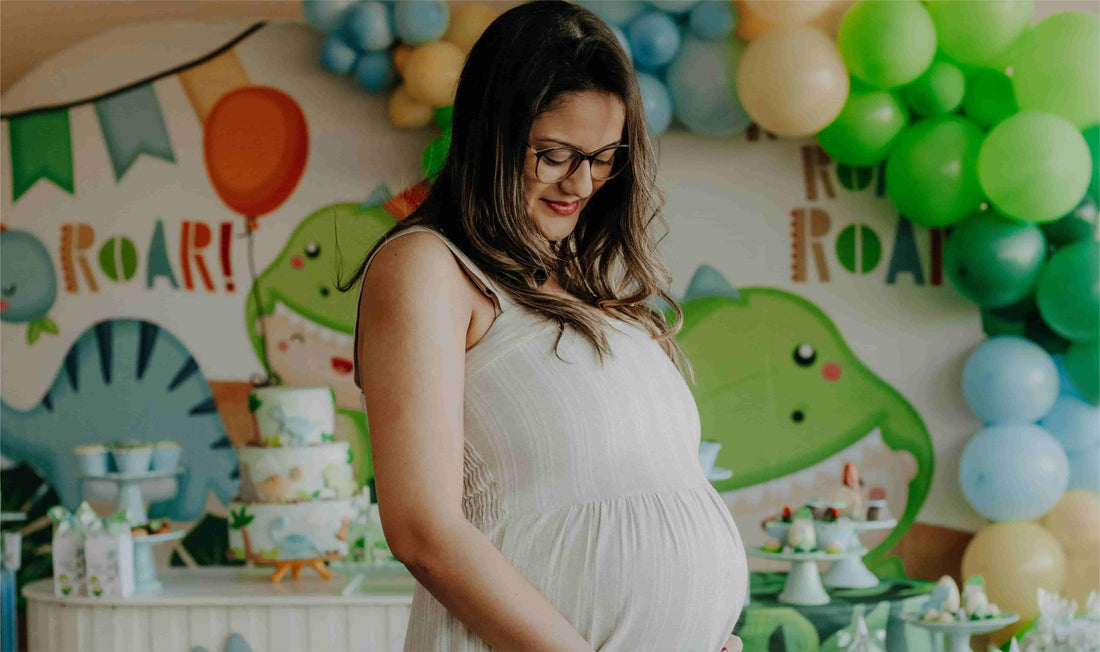First Trimester (Weeks 1-12)
Weeks 1-2: Preconception and Conception
- Mother: The first two weeks are part of your menstrual cycle. Conception typically occurs around the end of week 2.
- Baby: Fertilization happens when the sperm meets the egg. The fertilized egg, now a zygote, begins its journey to the uterus.
Week 3: Fertilization
- Mother: The fertilized egg (zygote) moves down the fallopian tube towards the uterus.
- Baby: The zygote starts dividing into multiple cells, forming a blastocyst, which will implant in the uterine wall.
Week 4: Implantation
- Mother: The blastocyst implants into the uterine lining, and early pregnancy symptoms like mild cramping or spotting may occur.
- Baby: The blastocyst begins to develop into an embryo and starts forming the placenta.
Weeks 5-6: Embryonic Development
- Mother: You may notice early signs of pregnancy like nausea, fatigue, and breast tenderness.
- Baby: The embryo's heart starts beating, and the neural tube, which will become the brain and spinal cord, begins to form.
Weeks 7-8: Rapid Growth
- Mother: Symptoms like morning sickness, food aversions, and mood swings are common.
- Baby: The baby’s facial features begin to form, and the limb buds that will become arms and legs appear.
Weeks 9-10: Organ Formation
- Mother: The uterus is expanding, and you may start to feel more emotional or tired.
- Baby: Major organs like the brain, liver, and kidneys start to develop, and the baby is now called a fetus.
Weeks 11-12: End of the First Trimester
- Mother: Many early symptoms may begin to ease as the body adjusts to pregnancy.
- Baby: The fetus is fully formed, and the risk of miscarriage decreases significantly.
Second Trimester (Weeks 13-27)
Weeks 13-14: Second Trimester Begins
- Mother: You may experience an energy boost and a decrease in nausea. The “pregnancy glow” often appears.
- Baby: The baby’s kidneys start functioning, producing urine, and bones begin to harden.
Weeks 15-16: Baby’s Movements
- Mother: You might start to feel the baby move, often described as flutters.
- Baby: The baby’s facial muscles can move, and they can now make sucking motions with their mouth.
Weeks 17-18: Gender Reveal
- Mother: Your baby bump becomes more noticeable, and you may have a second ultrasound to determine the baby’s gender.
- Baby: The baby’s skeleton is changing from soft cartilage to bone, and their unique fingerprints form.
Weeks 19-20: Halfway Mark
- Mother: At 20 weeks, you’re halfway through your pregnancy. You may experience back pain as your uterus grows.
- Baby: The baby is now covered in a protective coating called vernix caseosa, and the senses are developing.
Weeks 21-22: Enhanced Movements
- Mother: You may feel more pronounced movements as the baby becomes more active.
- Baby: The baby’s taste buds are developing, and they can hear sounds from the outside world.
Weeks 23-24: Viability Milestone
- Mother: Braxton Hicks contractions may begin as your body practices for labor.
- Baby: The baby’s lungs are developing, and if born prematurely, the baby now has a chance of survival with medical assistance.
Weeks 25-26: Preparing for Life Outside the Womb
- Mother: You might experience swelling in your feet and ankles, and your appetite increases.
- Baby: The baby’s eyes open, and they begin to respond to light and sound stimuli.
Weeks 27: End of Second Trimester
- Mother: As you approach the third trimester, you may feel more tired and find it harder to sleep comfortably.
- Baby: The baby’s brain is developing rapidly, and they are starting to practice breathing.
Third Trimester (Weeks 28-40)
Weeks 28-30: Growth Spurt
- Mother: Your baby bump is prominent, and you may experience heartburn and shortness of breath.
- Baby: The baby is gaining weight quickly, and their body fat is increasing to help regulate body temperature after birth.
Weeks 31-32: Preparing for Birth
- Mother: You may feel more discomfort as the baby grows and puts pressure on your organs.
- Baby: The baby’s bones are fully formed but still soft, and their movements may feel more restricted due to space.
Weeks 33-34: Final Preparations
- Mother: Your body is getting ready for labor, and you might notice more frequent Braxton Hicks contractions.
- Baby: The baby’s lungs continue to mature, and they’re practicing breathing by inhaling amniotic fluid.
Weeks 35-36: Nearing Full Term
- Mother: You may feel more tired and have difficulty sleeping as your due date approaches.
- Baby: The baby is now in the head-down position, ready for birth, and their skin is becoming smoother.
Weeks 37-38: Full Term
- Mother: You’re considered full-term at 37 weeks. Labor could start at any time, and you may feel a mix of excitement and anxiety.
- Baby: The baby’s organs are fully developed, and they’re continuing to gain weight in preparation for life outside the womb.
Weeks 39-40: Delivery Time
- Mother: You might feel an increased urge to nest as your body prepares for labor. Signs of labor, like contractions and water breaking, can happen any time now.
- Baby: The baby is ready to be born! They’re fully developed and waiting for the right moment to make their grand entrance.
Conclusion
Pregnancy is a remarkable journey filled with many changes and milestones. Understanding what to expect each week can help you feel more prepared and connected to your growing baby. Always consult your healthcare provider for personalized advice and support throughout your pregnancy.
